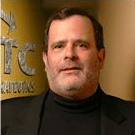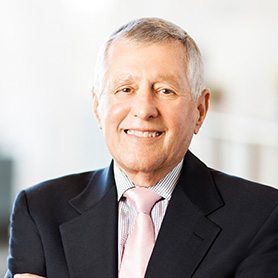
Top 10 pipeline blowups, setbacks and snafus in H1 2016
Print
06 July 2016
John Carroll / ENDPOINTS
Some years you have to stretch a bit to find a lineup of 10 notable setbacks in the pipeline. In the first half of this year, I could have done one in each quarter and had a few left over for the dishonorable mention column.
What we have here is a collection of gruesome self-inflicted wounds, more evidence that the home run swing looks good on paper and terrible in execution and a new category: the drug that posted positive data but looked bad compared to the competition.
You can mark that last one in red; it will be back in future lists. Getting positive data against a placebo or an older standard of care is less and less likely to cut it. More and more contenders will need to be compared instantly against rivals in the pipeline. And with expectations running high in fields like cancer, more analysts (though not all) are going to be making some real demands.
No doubt you’ll be thinking of other setbacks that didn’t make the list. And there were some doozies. J&J walked away from its anti-NGF pain drug fulranumab with barely a nod of the head. Novartis’ “breakthrough” muscle drug bimagrumab failed a key study. Aduro’s combo failed a key test. Esperion was eviscerated after it told investors that the FDA was changing course on its trial demands.
So it goes.
Drug development is a tough field. Just ask the following companies.
1. Clovis Oncology — rociletinib

CEO Patrick Mahaffy
Boulder, CO
The problem: Clovis Oncology billed its lead-up to the submission for rociletinib as an Olympic dive. For playing a direct role in turning the dive into a world-class belly flop, the biotech wins the top spot as H1’s biggest implosion.
Clovis watchers will remember that the company once played rival to AstraZeneca’s Tagrisso (9291). But then the FDA called them out on some suspicious tumor responses and a slew of confirmed hits had to be traded for misses. Its stock collapsed, FDA insiders could barely conceal their distaste and the company lost a considerable amount of rep along with the bulk of its market cap.
Roci was quickly buried and now no mention is made of it — even when the FDA’s PDUFA date rolled around June 28 without so much as a 2-sentence SEC filing to mark the formal rejection.
Currently under investigation by the feds, Clovis is now ramping up a new effort to back rucaparib, which finds itself in yet another late-stage horse race with serious competition. Failure here is not an option, but it’s a very real possibility.
2. AstraZeneca — ZS-9/tremelimumab

CEO Pascal Soriot
London
The problems: You don’t pay $2.7 billion for a hyperkalemia drug that’s awaiting regulatory action at the FDA, tell everyone you’re going to make more than a billion dollars a year off of it and then get handed a rejection without having a few red faces to show for it.
AstraZeneca says it won’t have to run a new trial for ZS-9, but it does have some explaining to do about manufacturing that was serious enough to warrant a CRL. AstraZeneca is a Big Pharma in a hurry, though, and caught up in a bidding war it barreled into a setback.
ZS-9 is now likely on hold until around the end of the year or early 2017 as Relypsa’s rival Veltassa continues to make progress on the market. Yet to be decided: Which of these drugs will have the most favorable safety profile, though ZS-9 still has several advocates on its side.
AstraZeneca, meanwhile, also had to explain a solo setback for the CTLA-4 drug tremelimum last February. A top prospect at AstraZeneca, the drug failed a Phase IIb trial for mesothelioma after investigators recruited 571 patients for the test.
3. BioMarin — drisapersen
San Rafael, CA
The problem: BioMarin paid $680 million to get drisapersen in its buyout of Prosensa. But that big gamble ended up being more than a complete write-off.
First, the FDA rejected the drug, which had already failed a Phase III in the hands of GlaxoSmithKline, which quickly washed its hands of the drug and walked away. Then the EMA said no as well, and BioMarin not only jettisoned the lead drug, the company deep-sixed three follow-up therapies it was working with in Phase II.
The company’s investigators couldn’t get anywhere with their argument that there was a treatment strategy that could help boys affected by the lethal disease. The outside and inside experts at the FDA gave that discussion short shrift. Now the R&D group is going back to the drawing board as Sarepta prepares to see if it can survive an attempt at an accelerated approval.
4. Alkermes — ALKS-5461

CEO Richard Pops
Dublin
The problem: A few weeks before the readout on the first two studies for ALKS-5461 hit in January, CEO Richard Pops called it a pending “seismic” event.
And how.
The first six months of this year was no time to disappoint investors grappling with a bear market for biotech stocks. Alkermes learned that lesson the hard way when its depression drug failed two studies and the market quickly relieved it of $4 billion in market cap.
The reason developers have three or four Phase III studies for a depression drug is because they are likely to fail. One after another has been done in by the placebo effect, but Alkermes believed that it had an edge with a novel new trial design aimed at thwarting that outcome. So two down means the drug is dead, right?
Not quite. The company came up with some post hoc reasons to believe they were still on to something and some analysts believe that a positive readout for the third study could yet salvage the situation. But it’s a narrow, dangerous path to be traveling at this stage.
Alkermes’ stock has been making a comeback since the company was blasted, but it’s been a slow climb.
5. Infinity Pharmaceuticals — duvelisib

CEO Adelene Perkins
Cambridge, MA
The problem: Sometimes even a statistical win can be a big loser. Case in point: Duvelisib.
A few weeks ago their lead drug hit the primary endpoint in the Phase II study for indolent non-Hodgkin lymphoma, and its partner AbbVie quickly folded its tent, dismissed their $250 million upfront partnering payment and hit the streets.
It was good, but just not good enough considering the competition.
Infinity suffered a thumping on Wall Street, but after back-to-back restructurings that cost 146 jobs (former “citizen-owners”) the company says it can work things out in its favor. Perkins, top scientist Julian Adams and everyone else still in for the ride can earn a retention bonus for staying on board. But after three strikes for three top drugs, some may start to question why they still have the bat.
6. Celldex — Rintega rindopepimut
Hampton, NJ
Cancer vaccines have had a woeful record over the last couple of years. Celldex added another dose of disaster after its try with Rintega proved so ineffective at treating glioblastoma the independent monitors suggested that investigators go ahead and pull the plug on the pivotal study last March.
The overall survival rate actually favored the control arm over the drug.
This was a drug that had inspired considerable confidence from the Phase II, which some investors thought should have been good enough to fuel an attempt at an accelerated approval. Some analysts were also let down at the time.
Celldex has several data readouts coming up. It’s in bad need of good news.
7. PTC Therapeutics — Translarna ataluren

CEO Stuart Peltz
South Plainfield, NJ
The problem: The FDA doesn’t often refuse to file an application, but it made an exception for PTC.
PTC gets some credit for admitting that the agency said it didn’t have the data needed for an approval of Translarna (ataluren), which possibly wasn’t too surprising as their drug had failed a mid-stage and pivotal study for Duchenne muscular dystrophy.
Regulators have carved out a special status for experimental drugs that treat Duchenne, though. That helps explain why the Europeans gave it a conditional approval two years ago and still have done nothing after the latest setback. Even NICE is negotiating over what it will pay to cover the drug, while it has gathered significant evidence that the drug doesn’t work well at all.
PTC may have thought that same regularity generosity would extend to Washington DC. But that was wrong.
8. Ionis Pharmaceuticals — IONIS-TTRR

CEO Stanley Crooke
Carlsbad, CA
The problem: Ionis changed its name from Isis to put a little distance between itself and the notorious terrorist group. But lately, it’s been terrorizing investors with a safety hazard on its lead antisense program.
Ionis CEO Stanley Crooke took the lead role in the drama, explaining during a call with analysts in May that their drug – at high doses — had been linked to perplexing low platelet counts in patients. That caused the FDA to trigger a clinical hold on a program, spurring GlaxoSmithKline to put a planned Phase III on a back burner.
Rather than reassure investors, Crooke seemed only to make matters steadily worse on his call, declining to answer some questions, such as whether any patients had died. He pled for more time, but investors are impatient with uncertainty and fear.
Further complicating Ionis’ position is its close competition with Alnylam, which was boosted on the travails of its rival.
9. AbbVie — Rova-T

CEO Richard Gonzalez
North Chicago, IL
The problem: AbbVie is developing a reputation as an undisciplined buyer. And you can put much of that down to Rova-T now.
AbbVie paid $5.8 billion in cash to buy Stemcentrx, largely based on the promise of the little-known cancer drug, which plays along a pathway for stem cells. And it has promised $4 billion more in milestones.
But at ASCO the preliminary data for small cell lung cancer showed a one-month survival advantage over historical trends, causing more than a few analysts to do a double take on the drug and the deal. AbbVie can still turn this around, but the public debut of this drug turned into a pratfall.
10. Regulus — RG-101

CEO Paul Grint
La Jolla, CA
The problem: Regulus got started nine years ago as a promising joint venture of Alnylam and Ionis, which you passed in the number eight spot on this list. Now in the lead up to its 10th anniversary, the company is faced with a fresh clinical hold on its lead program.
The biotech’s whole reason for being centers on its microRNA tech. The platform led it to a drug, RG-101, that is billed as a potential one-time treatment for hepatitis C. It’s also now been linked to two cases of jaundice, which triggered the hold.
The regulatory action raised all sorts of thorny issues for the company, including why it would have a top pipeline drug in a field where several new cures dominate the field. Even if RG-101 turns out to be a success, it would still face tough competition. (There is no tougher competitor than Gilead, which always plays to win.)
Hepatitis C is also a huge market with millions of potential patients, of course, but that also means the regulatory bar on safety is high. And now it has to face these travails with a badly beaten down stock price.
That’s not a pretty picture.
All Portfolio
MEDIA CENTER
-
The RMI group has completed sertain projects
The RMI Group has exited from the capital of portfolio companies:
Marinus Pharmaceuticals, Inc.,
Syndax Pharmaceuticals, Inc.,
Atea Pharmaceuticals, Inc.

